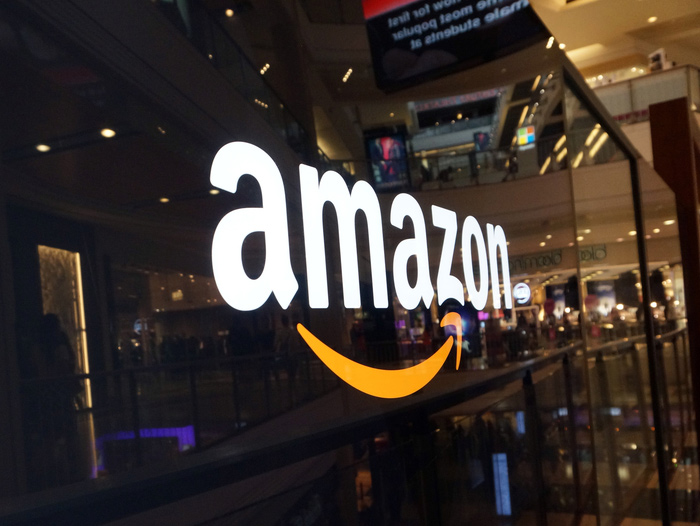Trump Administration Welcomes Amazon to the U.S. Food Loss and Waste 2030 Champions
October 20, 2020 | 5 min to read

WASHINGTON — On World Food Day, U.S. Environmental Protection Agency (EPA) Administrator Andrew Wheeler and U.S. Department of Agriculture (USDA) Secretary Sonny Perdue welcomed Amazon as a new member of the U.S. Food Loss and Waste 2030 Champions. Champions are U.S. businesses and organizations that pledge to reduce food loss and waste in their own operations by 50 percent by the year 2030. The commitment and action of these businesses will help the U.S. move closer to the national goal, protect and save valuable resources, and improve food system efficiencies while reducing waste.
“The Trump Administration is leading the way in combating food waste, and the addition of Amazon to our Food Loss and Waste 2030 Champions will go a long way toward us reaching our 2030 goals,” said EPA Administrator Andrew Wheeler. “Currently, over one-third of all food goes uneaten through loss or waste. That amount of loss is just too high, and as this Champions list expands, we will start to see real improvements in the way America manages its food.”
“Businesses are leaders in innovation, and we applaud Amazon for taking a leadership role in reducing food loss and waste,” said U.S. Secretary of Agriculture Sonny Perdue. “We encourage more manufacturers, grocers, restaurants, and other businesses to become U.S. Food Loss and Waste 2030 Champions.”
Amazon joins a list of existing champions, which includes: Ahold Delhaize, Aramark, Blue Apron, Bon Appetit, Browns Superstores, Campbells, Compass Group, ConAgra, Farmstead, General Mills, Giant Eagle, Hello Fresh, Hilton, Kellogg’s, Kroger, Las Vegas Sands, Marley Spoon, MGM Resorts, Mom’s Organic Market, Pepsico, Sodexo, Sprouts, The Wendy’s Company, Unilever, Walmart, Walt Disney World, Wegmans, Weis, Whitsons and Yum! Brands.
ONGOING FEDERAL FOOD WASTE REDUCTION EFFORTS
USDA has taken significant steps to highlight the need to reduce food waste nationally. In October 2018, USDA, EPA, and the U.S. Food and Drug Administration (FDA) signed a formal agreement to align efforts across the federal government to educate consumers, engage stakeholders, and develop and evaluate solutions to food loss and waste. In May 2020, the agencies updated the federal interagency strategy by listing contributing efforts in each of the priority action areas:
1. Priority Area 1: Enhance Interagency Coordination
2. Priority Area 2: Increase Consumer Education and Outreach Efforts
3. Priority Area 3: Improve Coordination and Guidance on Food Loss and Waste Measurement
4. Priority Area 4: Clarify and Communicate Information on Food Safety, Food Date Labels, and Food Donations
5. Priority Area 5: Collaborate with Private Industry to Reduce Food Loss and Waste Across the Supply Chain
6. Priority Area 6: Encourage Food Waste Reduction by Federal Agencies in their Respective Facilities
For more information on the Winning on Reducing Food Waste Initiative, visit:
www.epa.gov/sustainable-management-food
www.fda.gov/food/consumers/food-loss-and-waste
BACKGROUND
Meeting the national goal of cutting food waste in half by 2030 will take a sustained commitment from everyone. Success requires action from the entire food system including the food industry, and the U.S. 2030 Food Loss and Waste Champions group can help lead the way.
Facts about food waste:
· EPA estimates that more food (over 75 billion pounds) reaches landfills and combustion facilities than any other material in everyday trash, constituting 22% of discarded municipal solid waste.
· Landfills are the third largest source of human-related methane emissions in the United States.
· Food waste not only impacts landfill space and emissions, it hurts the economy. USDA estimates the value of food loss and waste for retailers and consumers each year to be over $161 billion.
· Food waste consumes 21% of all fresh water globally.
· Wasted food also results in unnecessary, excess expenditures of U.S. domestic energy resources.
Details on becoming a U.S. Food Loss and Waste 2030 Champion can be found at: www.usda.gov/foodlossandwaste/champions and www.epa.gov/sustainable-management-food/united-states-food-loss-and-waste-2030-champions.
Businesses not in a position to make the 50 percent reduction commitment may be interested in participating in EPA’s Food Recovery Challenge: www.epa.gov/sustainable-management-food/food-recovery-challenge-frc. State, local, tribal and territorial governments interested in making a commitment to food waste reduction can sign the Winning on Reducing Food Waste pledge.
